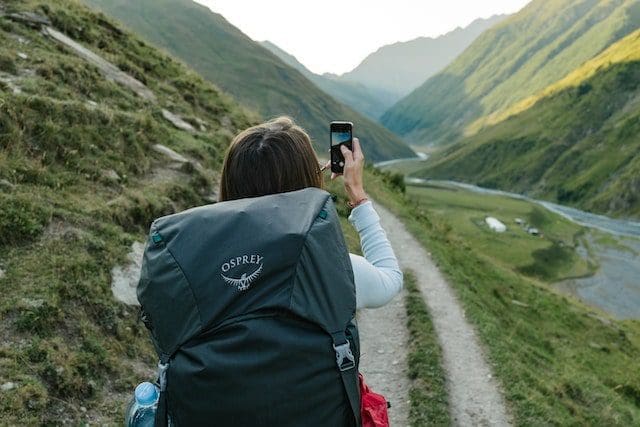Vacation season is in full swing and you’re ready to jet off to an off the beaten path destination; the only thing left? Setting up your phone for an international getaway. No need to worry! With a few simple steps, there are plenty of options today that make staying connected abroad easier than ever – no overpriced roaming costs or complicated setups necessary. Grab those travel size essentials, book plane tickets and Airbnb’s, because it’s time for adventure… with your trusty smartphone by your side!
1. Think about the way you use your phone
Planning a trip abroad is exciting, but it can also be daunting if you’re unsure how to prepare your phone for the journey. Whether Wi-Fi only or an international data plan will meet your needs depends on what type of traveler you are. A quick jaunt with plenty of local friends and access to their Wi-Fi? No need for further phone preparation! But heading off solo somewhere unfamiliar and relying heavily on digital maps & translations? You’ll want to make sure internet access won’t let you down – consider investing in an appropriate mobile data plan before setting out.
Remember that using a phone internationally can be expensive, so prepare ahead of time. Preparing that all-important travel companion (your smartphone!) doesn’t have to add too much weight onto pre-trip planning lists – so get surfin’ stress free!
2. Reduce traffic usage
Traveling with a limited data plan doesn’t have to be stressful. There are several tricks for conserving your precious megabytes – and my favorite is the Airplane Mode Method! This simple technique involves switching on airplane mode when you don’t need any data access, like checking emails or downloading updates. When necessary, turn off this setting momentarily to do essential tasks such as looking up translations or viewing maps; then switch it back afterward so that further usage is minimized, and precious mobile data is saved!
To save precious data, make sure to switch off auto-updates and syncing. Apps can quickly consume too much in the background without you even noticing–so be mindful of which ones are enabled! Explore Data Saver mode if running an Android device; this setting helps reduce usage by apps when they’re both operating in the foreground or background. Even with a great deal on your plan, every byte counts – so take some time today to review these settings for maximum efficiency!
3. Install a VPN
To take your online security to the next level, you may want to consider a virtual private network (VPN). Not only will this extra layer of encryption bring peace of mind while browsing in public places or on free Wi-Fi networks – it’s easy to install and use! By passing traffic through VPN servers, you can ensure that no one knows where your request is actually coming from and what site you are communicating with.
One of the most important travel tips is to install and use VPN for smartphones while traveling. VeePN is ideal for this, which securely encrypts traffic and offers a large list of available servers at a minimal cost. This is especially important if you plan to use your cell phone in countries that block many websites from other regions. The most famous example is the Great Firewall of China.
4. Prepare devices for customs
Despite the fact that U.S. citizens are protected by constitutional rights, border patrol officials still have a right to search and seize individuals’ phones, tablets, or laptops during entry into America – but this isn’t exclusive to our borders either!
When traveling internationally be sure you look out for each country’s specific regulations when it comes to digital device searches in order to protect any sensitive data stored on these devices. Before crossing international borders think about deleting photos of contacts from your phone as well as clearing browser history and caches – although all deleted information can easily be restored at home again later if needs must!
5. Consider charging your device
Planning an international trip? You don’t have to worry about your personal electronics – most of them, like smartphones, won’t need voltage converters. However, you may still be looking for a plug adapter so those square pegs can fit in round holes! But if you find yourself somewhere with USB plugs instead – it might not always be wise or secure to connect devices directly; having your own charger is the way forward and will allow simultaneous charging from one power socket no matter how many gadgets are coming along. Laptop users rejoice as this also gives you access to charge multiple items without buying extra adapters!
6. Provide an offline copy of important data
Having access to important information while traveling is essential, but what happens when the internet connection isn’t reliable? Make sure you’re prepared by saving critical data offline. From itineraries and emergency contact numbers to visa confirmation details or a map of your destination – keeping screenshots on hand means that no matter the situation, you have something tangible to refer back to!
7. Learn more about the area
Travelers often face the threat of phone snatching and pickpocketing in certain locations. To ensure your safety, be sure to stow away your devices in a secure pocket before adventuring out – preferably on you rather than tucked into a bag.
Additionally, if any emergency situation arises such as an evacuation due to fire or bomb threats, keep device use at bay for two reasons: It can slow down yourself along with fellow travelers; cell phones may also act as triggers for bombs! Keep these facts in mind when traveling abroad so that you remain safe from all possible hazards.
Conclusion
Traveling abroad can be a great experience, but proper preparation and safety measures must be taken in order to ensure the trip goes smoothly. By following some of these simple tips for using your personal devices, you will make sure that you are prepared and protected against any potential risks or threats while traveling. From encrypting your traffic with a VPN to scrutinizing the area, all of this will be useful for travelers and can greatly smooth out possible rough edges.


